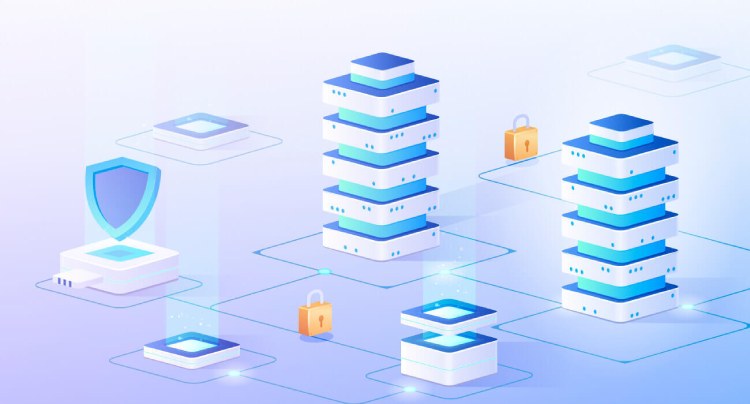Everything You Should Know About Big Data Security

Everything You Should Know About Big Data Security
Big data security is a growing concern as a result of the increasing monetary value of data and the fact that businesses can only benefit from it if they keep it effectively. The issue is that open-source Big Data analytics tools make it simple for cybercriminals to access and abuse stored data.
Also, data volumes have increased recently and will likely continue to do so, but this could exacerbate a severe problem with data security. If you don’t have large data security measures, data breaches could cost your company a lot of money.
Table of Contents
What is Big Data Security?
Big data security is a set of procedures and guidelines that enables everyone in the business to access data while safeguarding it against illegal access that could result in loss, deterioration, or corruption. The issue is much more serious in companies that use the cloud to run their operations.
Data theft, alteration, altering, encryption, or destruction are all potential threats that could lead to a breach, inaccurate data, or data that isn’t available. Such hostile online behavior may result in financial losses through penalties, fines, or legal fees.
It’s important to remember that hackers need success once. Nonetheless, a company must relentlessly stop such attempts because the hacker’s success could result in a huge loss for the company. Big data security analytics may answer the need for multiple methods to streamline big data for cyber security.
Why is Big Data Security Important?
According to a study on the costs of data breaches conducted by the Ponemom Institute based on an analysis of 537 real-world occurrences in the USA, around 25,575 user accounts were affected. The incidents cost nearly $8M in damages.
See the image below to learn how much a data breach costs in terms of penalties or punishments worldwide.
The United States tops the leaderboard in dollars (millions), and the Middle East is not far behind.
Yet, the cost of data compromise extends beyond monetary losses and can harm a company’s reputation and the goodwill it has worked hard to build up over the years. As a result, consumer confidence declines, leading to a business decline.
A compliance challenges resulting from government-imposed rules pertaining to data security can also arise. Hence, a business must use big data security analytics to prevent, identify, and respond to risks rather than simply working to prevent data theft.
Which Big Data Problems Concerning Security and Privacy are the Most Serious?
According to the 2017 New Vantage Partners Big Data CEO Survey, 90% of Fortune 1000 corporate leaders asked stated they have deployed big data initiatives within the previous five years. Nevertheless, 48.4% said the projects were difficult to implement and did not produce the anticipated outcomes. These are the difficulties.
Lack of Knowledge Among Professionals
Data scientists, analysts, and engineers can only handle big data analytics. Unskilled workers cannot manage the intricate and vast tools used to systematize big data for cybersecurity or make sense of such data sets. The necessity for trained experts is highlighted by the fact that professionals cannot keep up with the developments in big data technology.
Solution
Businesses are investing money in hiring professionals or educating their current employees to manage big data security analytics. Using big data analytical tools that laypeople can utilize is another cost-effective option.
Insufficient Understanding
Because their staff members may not appreciate the value of storing, processing, or handling data, many organizations struggle when attempting big data projects. As a result, they don’t go through the hassle of backing up and storing data in the appropriate spot for easy retrieval.
Solution
Every team member must understand how big data technologies function and their importance, according to the organization. They may accomplish the same thing by planning seminars, webinars, and military training for those that handle data frequently.
Data Growth Issues
Big data security analytics is challenging to manage since they are large and grow with time. Enormous data is also challenging to handle. Also, it comes in various formats, including audio, video, text, and document files.
Solution
Companies must use deduplication to eliminate useless or duplicate files, compression to condense data, and multiple storage tiers to store it. Additionally, they use big data tools for speedy data retrieval and store data on the cloud, both private and public.
Incorrect Big Data Tool
Making the best choice is difficult due to a lack of awareness about big data tools. They choose technologies that might not be appropriate for their industry, resulting in lost productivity, money, and data.
Solution
Organizations must hire professionals with extensive expertise of big data security analysis techniques.
Securing Data
Combining data from several sources to produce reports can be difficult, and data integration is crucial for data analysis and business intelligence.
Solution
The simplest way to solve this issue is to purchase suitable data integration tools. These are your options:
- Talend Data Integration
- Centerprise Data Integrator
- ArcESB
- IBM InfoSphere
- Xplenty
- Informatica PowerCenter
- CloverDX
- Microsoft SQL QlikView
Big Data Security Technologies
Big data’s insightful capabilities are crucial for helping businesses plan their marketing strategies. These are the most well-liked:
Companies utilize user- or machine-generated code to encrypt specialized big data files or data from various sources.
User Access Control
Without user access management, organizations cannot safeguard massive or network-level data. The access control system protects the company’s big data from insider threats and is given according to the user’s work profile.
Centralized Key Management
Data security through automation is most cost-effective when using centralized key management. The centralized key only manages keys and acts as an agent for systems that use the key to conduct cryptographic operations.
Intrusion Detection and Prevention (IDS &IPS)
IDS and IPS continuously monitor the network’s infrastructure to spot intrusions and stop them from accessing or corrupting data by immediately providing an alarm when they identify malicious activity.
Physical Security
Even if a company has the requisite big data analytics, intruders could enter and cause system damage or steal data if physical security is lacking. Use big data security analytics to prevent attacks by setting up CCTV or hiring security personnel.
Big Data Security Policy
The big data policy serves as a manual for managing consumer, sensitive, PII of employees, and intellectual property data. Depending on the user, there are two types of significant data security:
People
The big data security personnel policy covers proper and improper user conduct when gaining access to data. Employee email usage is advised, and email-based intrusions are prevented.
The organization’s password policy must include all relevant information and clarify whether or not social media use is encouraged or prohibited.
Technology
The mobile phone is the main barrier to data security in today’s corporate environment. Hence, technology-based regulations must include all datasets that use off-site storage, encryption, and other methods with logical and physical security, as well as approaches to maintain maximum caution during backup.
What are the Best Big Data Security Tools?
Assuming big data for cyber security does its job, it should satisfy the following four criteria: data encryption when in motion and at rest, centralized management and audit, authentication, and permission.
Consider using big data security analytics with perimeter and intra-cluster two-level authentication to force users to authenticate (disclose their true identities) before the system allows them access. Impose authorization to adhere to the existing security standard at various granularity levels.
Some leading big data security technologies feature centralized administration systems that report activities while maintaining the system and doing audits to meet security requirements. To identify and stop unauthorised data access, big data for cybersecurity needs to protect data at the field, network, and file levels.
Big Data Security Implementation
Organizations can gain from the timely application of big data analytics in several ways, supporting the technology’s quick performance improvement across various industries. Here are a few essential cybersecurity tools for implementing big data security.
Encryption
Encryption safeguards input and output data, providing total data security. Without the access key, data is meaningless to the user.
Firewall
A powerful firewall serves as a wall to prevent harmful actions and is a preventive security technology that filters users as they enter or leaves the server.
Tiered Access System
Only authorized individuals can have root access to Business Intelligence tools and extensive data security analytics systems to maximize big data for cybersecurity. A tiered access system can offer significant defense against dangers or cyber-attacks.
Conclusion
By utilizing big data analytical tools, businesses may put better strategies into practice. However, the widespread use of these gadgets can make it simple for thieves to access data, leading to data breaches. Security is an increasing worry despite government restrictions since customers are unaware of how big data analytics platforms handle or store their data. Securing the big data security analytics platform is the only way to guarantee the big data’s limitless advantages.
Also read: Data Privacy In A New Age With AI
Also read: Google Analytics





